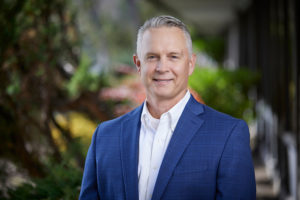Sponsored post by Bold Concepts
 Included in the American Rescue Plan Act, which President Biden signed in March, was $10 billion to fund the State Small Business Credit Initiative (SSBCI). This program funds state, territory, and Tribal government small business and support programs. Included in that $10 billion is at least $500 million allocated to Tribal governments.
Included in the American Rescue Plan Act, which President Biden signed in March, was $10 billion to fund the State Small Business Credit Initiative (SSBCI). This program funds state, territory, and Tribal government small business and support programs. Included in that $10 billion is at least $500 million allocated to Tribal governments.
“The great thing about this Treasury program is that for newer Tribal and Tribal member firms, they will be able to leverage free Treasury money for use as collateral to greatly increase their current surety bonding program.,” said Kevin Wimsatt, Chief Executive Officer of Bold Concepts. “For a lot of small businesses, when they’re growing quickly, capital is being used to fuel growth and there’s not enough retention left to be used as sufficient collateral for equal growth of their bonding program needs.”
Enter ACTIVBonding, a sister company to Bold Concepts, which provides small business general contractors and Tribal enterprises with a customized roadmap to prepare for and obtain higher surety credit at two to three times greater than the market currently grants them.
“All federal construction contracts over $100,000 have to be bonded,” Wimsatt said. “It’s like an insurance policy for the customer but it is a line of credit on the contractor side, so your total program amount is based upon your surety credit worthiness.”
“What surety companies do is look at your collateral; if you have $1 million in collateral, you might get 8:1 or 10:1 in bonding,” Wimsatt continued. “If you have an established history, if you’ve been around for 15 years and all your jobs are completed well and you’ve mitigated claims against you, you can get 15:1 or 20:1 or 30:1 on that same collateral.
“This really affects newer startup firms that just don’t have the history to earn that better multiplier,” Wimsatt continued. “Our program is able to offer 20:1 right off the bat by offering a co-indemnification program. We leverage our reputation and own collateral for a fee to immediately earn higher bonding program capability for these growing companies.”
![]() ACTIVBonding uses the mechanism of its program, while also supplementing client collateral, to match what they have with Treasury’s SSBCI funding. This allows the basis for the bonding program to grow, which in turn enables young Tribal and Tribal member firms to grow at a much faster pace than the regular surety market would otherwise permit.
ACTIVBonding uses the mechanism of its program, while also supplementing client collateral, to match what they have with Treasury’s SSBCI funding. This allows the basis for the bonding program to grow, which in turn enables young Tribal and Tribal member firms to grow at a much faster pace than the regular surety market would otherwise permit.
In addition to these capabilities, ACTIVBonding is now looking to use the Treasury money to develop a collateral pool that can be shared among Tribal entities.
“When you look at bonding capacity, you take an individual company’s balance sheet, which is basically the collateral, and you do the multiplier against it and that’s what their bonding program is,” Wimsatt said. “In this case, multiple Tribal entities can separate some of their collateral and put it in one pool that we’re organizing under this SSBCI program. What that allows for us is that it’s still their money and it’s still part of their balance sheet; but if it’s in this pool, we can use the power of cross-collateralization to share unused bonding between entities and be 100 percent efficient.”
“So with entities that aren’t using some of their bonding program because they don’t need it, we can take that unused portion of the bonding program and assign it to an entity that needs more,” Wimsatt continued. “All of the Tribes or Tribal member entities that contribute to the pool can utilize it when they need it and when they don’t need it, the excess collateral is “borrowed” by others in a sense.”
In addition to an unlimited and perpetual return on the one-time SSBCI Treasury fund investment and efficient use of the fund collateral, the program also offers lower risk through the shared knowledge base of the program participants. Participants should be motivated to assist other program participants with non-proprietary resources, like subcontractor base qualification, common customer challenges, geographically specific tax and insurance requirements, and unused labor, as the pool members benefit from mitigating overall risk to the collective pooled collateral.
Important to note is that a critical deadline is coming up on September 16th when a Notice of Intent is due. Full program applications are due December 11th. For more information, schedule a meeting with ACTIVBonding click here.
